Camera traps have been a key part of the conservation toolkit for decades. Remotely triggered video or still cameras allow researchers and managers to monitor cryptic species, survey populations, and support enforcement responses by documenting illegal activities. Increasingly, machine learning is being implemented to automate the processing of data generated by camera traps.
A recent study published showed that, despite being well-established and widely used tools in conservation, progress in the development of camera traps has plateaued since the emergence of the modern model in the mid-2000s, leaving users struggling with many of the same issues they faced a decade ago. That manufacturer ratings have not improved over time, despite technological advancements, demonstrates the need for a new generation of innovative conservation camera traps. Join this group and explore existing efforts, established needs, and what next-generation camera traps might look like - including the integration of AI for data processing through initiatives like Wildlife Insights and Wild Me.
Group Highlights:
Our past Tech Tutors seasons featured multiple episodes for experienced and new camera trappers. How Do I Repair My Camera Traps? featured WILDLABS members Laure Joanny, Alistair Stewart, and Rob Appleby and featured many troubleshooting and DIY resources for common issues.
For camera trap users looking to incorporate machine learning into the data analysis process, Sara Beery's How do I get started using machine learning for my camera traps? is an incredible resource discussing the user-friendly tool MegaDetector.
And for those who are new to camera trapping, Marcella Kelly's How do I choose the right camera trap(s) based on interests, goals, and species? will help you make important decisions based on factors like species, environment, power, durability, and more.
Finally, for an in-depth conversation on camera trap hardware and software, check out the Camera Traps Virtual Meetup featuring Sara Beery, Roland Kays, and Sam Seccombe.
And while you're here, be sure to stop by the camera trap community's collaborative troubleshooting data bank, where we're compiling common problems with the goal of creating a consistent place to exchange tips and tricks!
Header photo: Stephanie O'Donnell
No showcases have been added to this group yet.
- @kanopi_indonesia
- | We
20 years of experience in biodiversity research, species conservation and community empowerment.
- 0 Resources
- 0 Discussions
- 6 Groups
- @NicoLaur
- | He/Him
PhD Student in Disease Ecology, Taxonomy and biomonitoring in Central Africa
- 0 Resources
- 0 Discussions
- 6 Groups
- @affiliatepurna
- | general email id
Purna Man Shrestha is a program coordinator of mountain spirit, Nepal. He has 6 years of working experience in human wildlife interaction focusing on wildcats, and conflicts. He has a good knowledge on wildlife survey techniques, field survey, stakeholder engagement
- 0 Resources
- 0 Discussions
- 10 Groups
- @vfhawkinson
- | she/her
University of Washington
PhD student assessing multi-scalar livestock-wildlife interactions in the American West
- 0 Resources
- 1 Discussions
- 8 Groups
- @akshayanc
- | She/her
Hi, I'm Akshaya from India. I have completed MSc in Ecology with a specialization in Ecological Informatics at Digital University Kerala.
- 0 Resources
- 0 Discussions
- 2 Groups
- @davidhunter
- | he/him
University of Colorado Boulder
PhD student exploring design and technology to connect people with nature and the environment



- 0 Resources
- 24 Discussions
- 5 Groups
HaMaarag
Quantitative ecologist
- 0 Resources
- 0 Discussions
- 3 Groups
- @emcandler
- | she/her
- 0 Resources
- 0 Discussions
- 6 Groups
- @kaitlyngaynor
- | she/her, they/them


- 0 Resources
- 0 Discussions
- 3 Groups
- 0 Resources
- 0 Discussions
- 3 Groups
Senior Wildlife Research Scientist
- 0 Resources
- 0 Discussions
- 7 Groups
Scaling biodiversity monitoring, using smart sensors and ai-pipelines

- 0 Resources
- 2 Discussions
- 10 Groups
Read about the advice provided by AI specialists in AI Conservation Office Hours 2025 earlier this year and reflect on how this helped projects so far.
6 August 2025
If you're a Post-Doctoral Fellow, a PhD student, or a member of the research staff interested in applying your computational skills to support active research publications, please read on to learn about the Cross-...
5 August 2025
New opportunity to work with moths, camera light traps and citizen science in Germany.
5 August 2025
Proud of sharing our paper introducing our underwater camera trap, a solution for automating the production of underwater images and videos of amphibians, reptiles, invertebrates, mammals...
2 July 2025
I put together some initial experiences deploying the new SpeciesNet classifier on 37,000 images from a Namibian camera trap dataset and hope that sharing initial impressions might be helpful to others.
23 April 2025
A nice resource that addresses the data interoperability challenge from the GBIF.
4 April 2025
Conservation International is proud to announce the launch of the Nature Tech for Biodiversity Sector Map, developed in partnership with the Nature Tech Collective!
1 April 2025
The FLIR ONE thermal camera is a compact and portable thermal imaging device capable of detecting heat signatures in diverse environments. This report explores its application in locating wild animals across large areas...
27 March 2025
WWF's Arctic Community Wildlife Grants program supports conservation, stewardship, and research initiatives that focus on coastal Arctic ecology, community sustainability, and priority Arctic wildlife, including polar...
7 March 2025
The Smithsonian’s National Zoo and Conservation Biology Institute (SNZCBI) is seeking an intern to assist with multiple projects related to conservation technology for wildlife monitoring. SNZCBI scientists collect data...
3 March 2025
Article
NewtCAM is an underwater camera trap. Devices are getting deployed worldwide in the frame of the CAMPHIBIAN project and thanks to the support of our kind early users. Here an outcome from the UK.
24 February 2025
Osa Conservation is launching our inaugural cohort of the ‘Susan Wojcicki Research Fellowship’ for 2025, worth up to $15,000 per awardee (award value dependent on project length and number of awards given each year)....
10 February 2025
August 2025
event
event
September 2025
event
event
event
September 2024
event
August 2024
58 Products
Recently updated products
4 Products
Recently updated products
| Description | Activity | Replies | Groups | Updated |
|---|---|---|---|---|
| Hi Mark, thanks for responding. I think you've identified one of the most difficult parts of research climbing: maintaining your climbing skills and knowledge between field... |
|
Community Base, Camera Traps, Conservation Tech Training and Education, Early Career | 7 months ago | |
| And I see now they can walk vertically up walls like Spider-Man. |
|
Camera Traps, AI for Conservation | 7 months 1 week ago | |
| Hello Carly, Congratulations for this project!I am studying right now a second MA in Environment Management. I would like to do my MA thesis project about these technologies... |
+6
|
Acoustics, Camera Traps | 7 months 1 week ago | |
| I added plain old motion detection because megadetector v5 was not working well with the smaller rat images and in thermal.This works really well: Also, I can see... |
|
AI for Conservation, Camera Traps | 7 months 2 weeks ago | |
| Actually, you can source the product from anywhere, but I’m not very confident in the quality of products from China. That doesn’t mean products from China are bad—it might just... |
|
Camera Traps | 7 months 3 weeks ago | |
| great, this security cameras might be interesting for monitoring crop development and maybe other bigger pests like boars or some other herbivorous animals that could eventually... |
|
AI for Conservation, Camera Traps | 7 months 4 weeks ago | |
| Seems like we should include some rotations in our image augmentations as the real world can be seen a bit tilted - as this cropped corner view from our fisheye at the zoo shows. |
+13
|
AI for Conservation, Camera Traps, Data management and processing tools | 8 months ago | |
| Thanks! The Teensys are nice for processing power if choosing an external Lora board I’d say that’s a good choice. I started with teensies, there was a well supported code base... |
|
Camera Traps, Sensors | 8 months 1 week ago | |
| Hi Raza,As @ollie_wearn suggests, if think traptagger will be the easiest for you: You just have to follow the tutorial there:The person in charge of Traptagger is also very... |
+3
|
Camera Traps | 8 months 1 week ago | |
| Hello Wildlabs community! My name is Shawn Johnson and I am a research assistant for Dr. Karen Mager and Dr. Bernie Boscoe here at Southern... |
|
Camera Traps | 8 months 3 weeks ago | |
| Hi Zhongqi! We are finalizing our modelling work over the next couple of weeks and can make our work availabile for your team. Our objective is to create small (<500k... |
|
AI for Conservation, Camera Traps, Software Development | 8 months 3 weeks ago | |
| There's quite a few diy or prototype solutions described online and in literature - but it seems none of these have made it to market yet as generally available fully usable... |
|
AI for Conservation, Camera Traps, Human-Wildlife Coexistence, Sensors | 8 months 3 weeks ago |
Video camera trap analysis help
21 November 2023 7:49am
14 December 2023 10:52am
Thanks so much, will look into it.
15 December 2023 4:48pm
Hi there!,
You should definitely check out VIAME, which includes a video annotation tool in addition to deep learning neural network training and deployment. It has a user friendly interface, has a publicly available server option that mitigates the need for GPU enabled computer for network training, and has an amazing support staff that help you with your questions. You can also download the VIAME software for local use. The tool was originally developed for marine life annotation, but can be used for any type of video or annotation (we are using it to annotate pollinators in video). Super easy to annotate as well. Worth checking out!
Cheers,
Liz Ferguson
Underwater camera trap for amphibian - Call for early users
13 December 2023 9:57pm
Shedding light on nocturnal behaviour: A cost-effective solution for remote, infrared video recording in the field
13 December 2023 5:55pm
Project support officer - Conservation Tech
11 December 2023 10:24pm
Is anyone or platform supporting ML for camera trap video processing (id-ing jaguar)?
27 November 2023 10:49am
7 December 2023 12:42pm
Hey there community! Im new here and looking after lots of answers too! ;-)
We are searching aswell for the most ideal App / AI technology to ID different cats, but also other mammals if possible
- Panthera onca
- Leopardus wiedii
- Leopardus pardalis
and if possible:
- Puma concolor
- Puma yagouaroundi
- Leopardus colocolo
- Tapirus terrestris
Every recommendation is very welcome, thanks!
Sam
7 December 2023 2:31pm
Is this from camera trap images? Videos? Wildlife Insights is great! It uses Megadetector as a first pass to filter out empty images (those without animals), which you can also just use on its own. If you want to do individual re-ID, you can use Wildme. And as I mentioned previously in the comments, Zamba Cloud can work with videos. Conservation AI is another player in the game as well.
11 December 2023 1:38pm
Also, take a look at TrapTagger. It has integration with WildMe.
Paving the Way for Women: LoRaWAN Technology in Akagera National Park with Clementine Uwamahoro
 Esther Githinji
and 1 more
Esther Githinji
and 1 more
29 November 2023 5:22pm
ICOTEQ launch TAGRANGER® system of products
23 November 2023 1:25pm
AWMS Conference 2023
Eliminatha, WiCT 2023 Tanzania
21 November 2023 1:09pm
Alternative to Reconyx Ultrafire
8 November 2023 9:07am
18 November 2023 8:22pm
The two cameras you mention below tick off most of the items in your requirements list. I think the exception is the “timed start” whereby the camera would “wake up” to arm itself after a certain date. Camlockbox.com provides security boxes for both.
Especially if a white flash is useful in your research, you may also want to consider the GardePro T5WF. I don’t have a lot of long-term experience with this camera, but it is one of the few that offers a white flash, and it has excellent battery life, especially for night captures. The audio can be a little flaky
I have done posts on these cameras, including a teardown. See:
https://winterberrywildlife.ouroneacrefarm.com/2022/04/10/browning-spec-ops-elite-hp5-teardown/
https://winterberrywildlife.ouroneacrefarm.com/2022/09/26/inside-the-bushnell-core-ds-4k-trail-camera/
https://winterberrywildlife.ouroneacrefarm.com/2023/11/18/gardepro-t5wf-white-flash-trail-camera/
I have heard reports that the HP5 can let in moisture in very wet environments. This may be a direct water contact type of thing, as we have never had water issues with this camera when it is installed in a lock box (US Northeast, Northwest).
We prefer the HP5 due to superior image and audio quality. That said, there is a known issue that with some HP5 cameras, with some fast (> 80 MB/s rated read) and large SD cards, the SD card can become corrupted, preventing the camera from capturing images. I address this, including a fix via firmware, in another post:
https://winterberrywildlife.ouroneacrefarm.com/2023/11/16/fixing-browning-edge-elite-hp4-and-hp5-sd-card-corruption/
Hope this helps.
-bob
Research/Field Technician - SPEC Lab Ocelot Research Program
16 November 2023 1:58pm
Insight; a secure online platform designed for sharing experiences of conservation tool use.
7 November 2023 1:01pm
DeepFaune: a software for AI-based identification of mammals in camera-trap pictures and videos
14 July 2023 3:14pm
24 October 2023 8:46pm
Hello to all, new to this group. This is very exciting technology. can it work for ID of individual animals? we are interested in Ai for identifying individual jaguars (spots) and andean Bears (face characteristics). Any recommendation? contact? thanks!
German
25 October 2023 8:57am
That's a very interesting question and use case (I'm not from deepfaune). I'm playing with this at the moment and intend to integrate it into my other security software that can capture and send video alerts. I should have this working within a few weeks I think.
The structure of that software is that it is two stage, the first stage identifies that there is an animal and it's bounding box and then there's a classification stage. I intend to merge the two stages so that it behaves like a yolo model so that the output is bounding boxes as well as what type of animal it is.
However, my security software can cascade models. So if you were able to train a single stage classifier that identifies your particular bears, then you could cascade all of these models in my software to generate an alert with a video saying which bear it was.
4 November 2023 4:51am
Hi @GermanFore ,
I work with the BearID Project on individual identification of brown bears from faces. More recently we worked on face detection across all bear species and ran some tests with identifying Andean bears. You can find details in the paper I linked below. We plan to do more work with Andean bears in 2024.
I would love to connect with you. I'll send you a message with my email address.
Regards,
Ed
Multispecies facial detection for individual identification of wildlife: a case study across ursids | Mammalian Biology
To address biodiversity decline in the era of big data, replicable methods of data processing are needed. Automated methods of individual identification (I
Nepal's tiger conservation gets tech boost with AI-powered deer tracking
30 October 2023 1:23pm
Modifying GoPro cameras to be IR sensitive.
25 October 2023 6:38pm
27 October 2023 6:35am
Hi Jay!
Thanks for posting this here as well as your great presentation in the Variety Hour the other day!
Cheers!
5 Trailblazing Wildlife Monitoring Tech Solutions across East Africa. What Monitoring Technologies are you using?
25 October 2023 12:40pm
Metadata standards for Automated Insect Camera Traps
24 November 2022 9:49am
2 December 2022 3:58pm
Yes. I think this is really the way to go!
6 July 2023 4:48am
Here is another metadata initiative to be aware of. OGC has been developing a standard for describing training datasets for AI/ML image recognition and labeling. The review phase is over and it will become a new standard in the next few weeks. We should consider its adoption when we develop our own training image collections.
24 October 2023 9:12am
For anyone interested: the GBIF guide Best Practices for Managing and Publishing Camera Trap Data is still open for review and feedback until next week. More info can be found in their news post.
Best,
Max
Trail cam recommendations for capturing small, quick mammals at night?
16 October 2023 12:01am
20 October 2023 3:24pm
Hi @MaddievdW have you considered using a 'tunnel' to help, well, funnel, small critters into a space with a camera that makes it a bit easier for detections? A few years back, we made a PVC pipe tunnel with a protected food lure that seemed to work well with even cheapy trail cameras (and in fact, we ended up having to block some of the IR illumination using a few layers of athletic tape over the LED array). Here's a rather blurry image of a bandicoot we got: 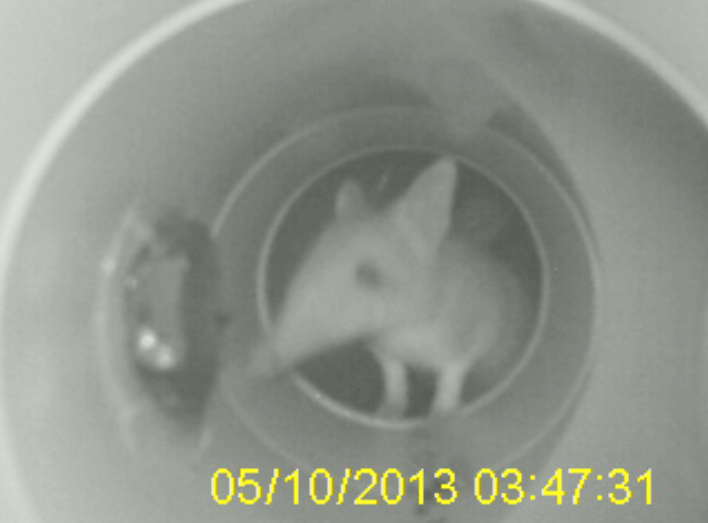
And another of an antechinus:
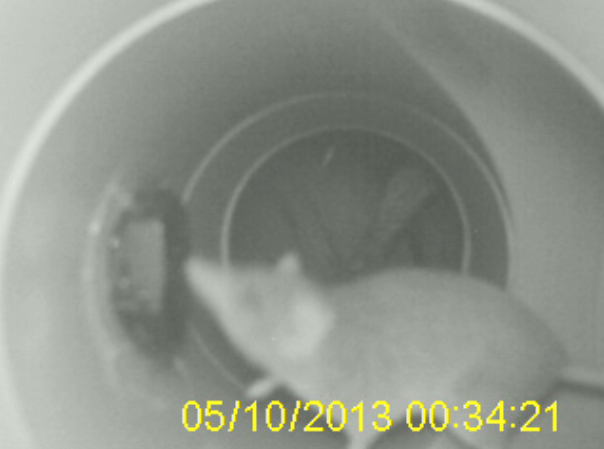
We weren't that concerned with image quality, as we were actually testing an RFID logger in the tunnel also, and simply wanted to know if we got critters with no tags and what species (if possible). So one thing I'd definitely consider if you go down this path is focal length of the camera. Here's a previous discussion on a similar idea:
I guess you could always 'calibrate' it to a certain extent by just using a longer section of pipe. Here's what our set up looked like, but again, we had the RFID logger, so a camera-only version would be a bit simpler - the camera and battery was in the screw top section on the left-hand-side of the tunnel image and each entrance had RFID antennas linked backed to a logger in the same compartment as the camera:
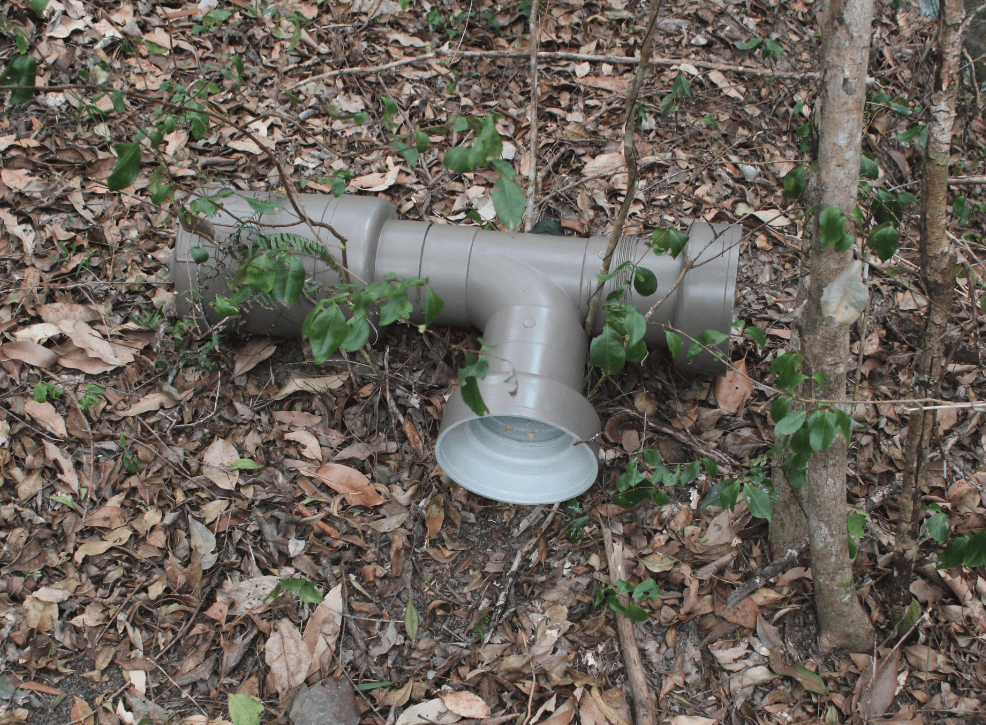
All the best for your research,
Rob
20 October 2023 5:06pm
Addressing each of the questions/issues posed:
Triggering Camera:
If you are getting triggers, but empty frames, during known visits by these lickety-split animals, the issue is the trigger speed. Looking at the Browning selection guide, for example, https://browningtrailcameras.zendesk.com/hc/en-us/article_attachments/12697703673243
I see that the Elite-HP5 models have a 100 ms advertised min trigger speed, which is slightly (50 ms) than the Dark Ops Pro DCL. This is equivalent to 2 earlier frames (at 60 FPS video), which could be significant with fast moving targets.
I have found, BTW, counterintuitively, that for Browning SpecOps and ReconForce models (Elite-HP5) that camera gets to first frame sooner when taking videos vs. when taking stills. I don’t understand this completely, but it’s a thing.
If you are not getting any triggers, then the PIR sensor is somehow missing the target. Make sure you understand the “detection zones” supported by your camera. These are not published, but can be determined with some patience and readily available “equipment” – see my post on “Trail Camera Detection Zones” at https://winterberrywildlife.ouroneacrefarm.com/2022/08/01/deep-tech-trail-camera-detection-zones/
Putting more than one camera at a site may also increase the probability that at least one triggers (and may improve lighting, see below)
If you’re consistently missing triggers, you may have to consider a non-PIR sensor. Unfortunately, this removes you from the domain of commercial trail cameras. Cognisys makes a number of “active” sensors based on “break beam” and (now) lidar for use with DSLR-based camera traps. You would also have to come up with your own no-glow lighting source, and hack the DLSR camera to remove the (built-onto-the sensor) IR filter. In our experience, these sets are 10x more expensive and time consuming vs. commercial trail camera sets, and are only justified by the potential for (a few) superior images.
The species-specific triggers and sets mentioned on this thread seem like a better option.
Avoiding daytime false triggers: All the commercial trail cameras I’m aware of have a single type of trigger sensor. It is based on a Passive InfraRed (PIR) sensor and Fresnel lens. Apps, Weldon and McNutt cover this admirably in Peter Apps, John Weldon McNutt, “How camera traps work and how to work them,” African Journal of Ecology, 2018.
These sensors trigger on changes in certain areas of the thermal field – in practice a combination of a heat and motion in one or more detection zones. They are not decomposable.
Some cameras (e.g. Browning SpecOps, and maybe the Dark Ops Pro?) allow you to set hours of operation so that the camera only triggers at night, for example. This would cause you to (for sure) miss “off hours” appearances by your target species, but would avoid daytime false triggers.
No Glow Image Quality: The good news about longer wavelength “No-Glow” flashes is that animals are less sensitive to them. The bad news is that the CMOS image sensors used by cameras are also less sensitive to the longer IR. Less signal leads to lower quality images. Others have mentioned adding supplemental no-glow illumination. An easy way to do this would be to set up two cameras at each of your sites. When they are both triggered, each will “see” twice as much illumination, and image quality will be improved. Browning SpecOps models (at least) have dynamic exposure control on video which allows this scheme to work (with only a frame or two of washout) while the algorithm adjusts exposure). For an example of this effect, see opening porcupine sequence in our video at https://www.youtube.com/watch?v=itx7KnlxKS4
21 October 2023 12:52am
Shedding light on nocturnal behavior: A cost-effective solution for remote, infrared video recording in the field
20 October 2023 12:31pm
Correspondence among multiple methods provides confidence when measuring marine protected area effects for species and assemblages
20 October 2023 12:28pm
Catch up with The Variety Hour: October 2023
19 October 2023 11:59am
GEO BON Monitoring Biodiversity for Action
5 October 2023 3:10pm
Good Thermal/ Night Vision Cameras?
1 September 2023 7:15pm
14 September 2023 1:31pm
@LucyHReaserRe At this area in the past, we have tried using a normal trail IR camera, but with very limited sensitivity. I have thought about adding the IR fog lights out there to help, but was leaning towards the thermal cameras to allow for more types of data to be taken from the images in the future i.e. age class based on heat signatures.
Thank you all for providing input, I will look into each of these ideas!
22 September 2023 11:13am
I'm jupping into the discussion, with a similar objective. I'm looking for a thermal camera trap, (I know cacophony). it would be use to improve invasive speices monitoring especially for rats and feral cats.
Any idea?
Thanks
22 September 2023 12:56pm
Hi @mguins , as @kimhendrikse mentioned resolution (and also brand) for thermal cameras can dictate a big jump in price. GroupGets has a budget Lepton (FS - short for 'factory second' I think) if you wanted to check one out:
They also have a bunch of other Flir products and boards for interfacing with Leptons etc., so worth a browse of the shop. It could also be worth taking a look at Seek modules, some of which @Alasdair has experience with : (e.g.
They also have modules you can connect to a mobile phone:
Compact Series
USD
@TopBloke I'd be very keen to see your Lepton camera trap too!
Cheers,
Rob
Q&A: UK NERC £3.6m AI (image) for Biodiversity Funding Call - ask your questions here
13 September 2023 4:10pm
21 September 2023 4:27pm
This is super cool! Me and @Hubertszcz and @briannajohns and several others are all working towards some big biodiversity monitoring projects for a large conservation project here in panama. The conservation project is happening already, but hubert starts on the ground work in January and im working on a V3 of our open source automated insect monitoring box to have ready for him by then.
I guess my main question would be if this funding call is appropriate/interested for this type of project? and what types of assistance are possible through this type of funding (researchers? design time? materials? laboratory field construction)
Camera Trap Data Management Survey: Results
20 September 2023 1:46am
Camera traps statistics
18 September 2023 10:22am
GBIF guide to managing and publishing camera trap data opens for community review
15 September 2023 2:23pm
A low-cost, long-running, open-source stereo camera for tracking aquatic species and their behaviours
5 September 2023 12:15pm
Camera traps reveal wildlifes' responses to megafires in Western U.S.
24 August 2023 10:47pm
Online training workshop: camera trap distance sampling, 23-27 October 2023
21 August 2023 2:24am




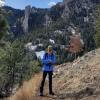
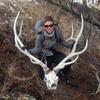









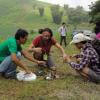















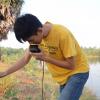






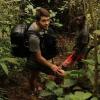













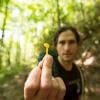





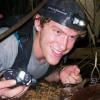


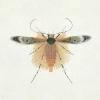


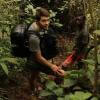





14 December 2023 10:52am
Awesome! Will look into it.